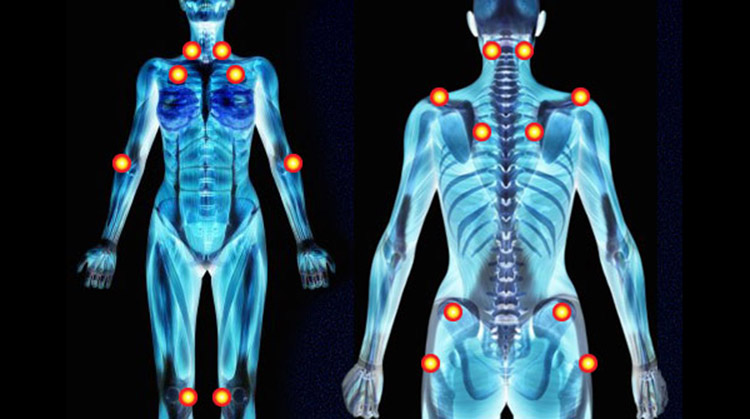
By Celeste Cooper.
Trigger points? Tender points? What are they and why do we care? We care because knowing the difference can affect your diagnosis and treatment.? ?
What are Tender Points?
Tender points are specific areas of tenderness, which have been mapped out on the “Tender Point Model.” The tender point model became part of the American College of Rheumatology criteria in 1990 after its development for a fibromyalgia study.
Characteristics of Tender Points
- The examiner cannot feel them.
- They cause local pain when pressed.
- They are no longer restricted to points on the tender point model.
- Though often found around joints, they are not related to joint disease or joint pain.
- They do not cause deep pain.
- They are not related to muscle pain.
- Tenderness is due to an upset in the central nervous system, called centralization.
Those who treat and study fibromyalgia question the tender point model because:
- Some of us may not have 11 of the 18 required for diagnosis.
- Tenderness is not limited to locations on the tender point model.
- Other associated symptoms have been found to occur in fibromyalgia.
The characteristics of a tender point and a trigger point are very different.
Characteristics of a Trigger Point (TrP):
- They are knotted up pieces of dysfunctional muscle fiber.
- They can usually be felt by the examiner.
- They radiate pain in a specific consistent pattern dependent on the trigger point location.
- They cause weakness of the muscle involved.
- They can cause joint and muscle immobility.
- They can be seen with ultrasound.
- They can have a visible twitch response.
- They are pain generators from the peripheral nervous system.
The Debate
Healthcare providers that specialize in myofascial pain syndrome understand how to assess and treat trigger points, while rheumatologists understand how to assess for tenderness and other symptoms related to fibromyalgia. The debate arises because myofascial pain syndrome can mimic many things and is also present in some of the conditions known to frequent fibromyalgia, such as interstitial cystitis(now known as painful bladder syndrome), pelvic pain, headache, restless leg syndrome, TMJ, IBS, and other conditions known to have both a peripheral and central nervous system component.? ?Dr. Robert Bennett and his team of investigators suggest in the Alternative Diagnostic Criteria that fibromyalgia is usually accompanied by at least one other pain disorder. When peripheral pain is generated by trigger points, it can enhance hypersensitivity found in fibromyalgia.
The Prognosis
Having someone skilled in assessing the difference between a tender point and a trigger point is very important because the treatments are very different. While research is underway for better treatments for the pain and tenderness, sleep disruption, fatigue, and cognitive decline found in fibromyalgia, treatments vary. However, there are successful treatments for myofascial trigger points. If you are gently massaging your tender muscles and find a lump or knot that radiates pain when you press on it, you have found a trigger point. Discuss this with your doctor and see if you can get a referral to someone who specializes in myofascial medicine.










